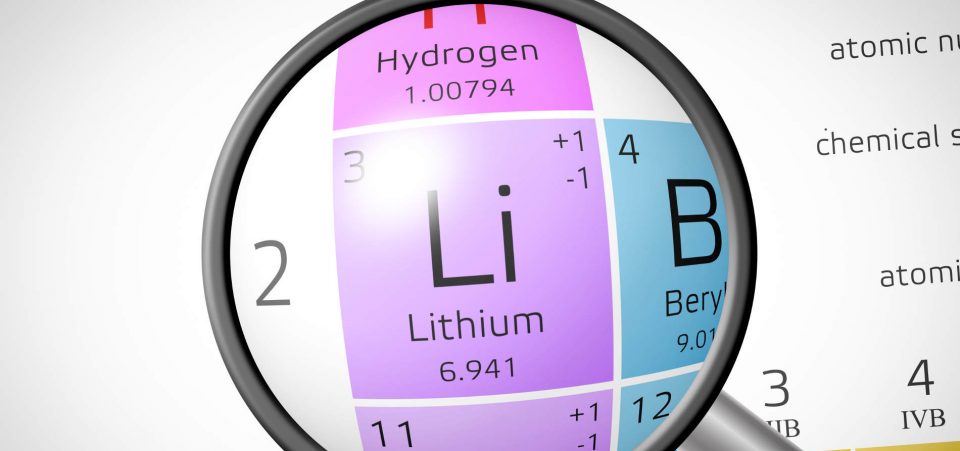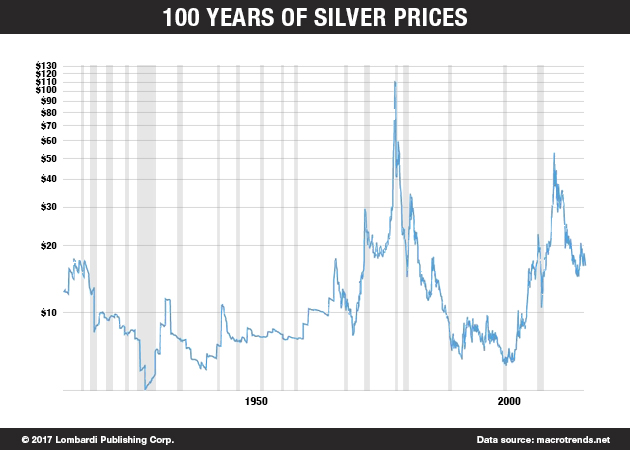The Major Lithium Mining Companies in the World
When lithium is machined, it becomes rather bright. Its appearance then turns to a silver-gray coloration when it comes into contact with the air. Since World War II, lithium production has increased significantly, especially in the past decade, because new technologies have found many uses for this once-ignored metal. Although the list of the top lithium mining companies is limited to just four, that number might increase in the next few years.
Billions of dollars will go into lithium production, both in mining the raw material and in processing it to make Lithium-ion (Li-ion) batteries. But battery manufacturers will soon run into a problem. Where will they find all the lithium they need to meet demand? The number of viable lithium resources worldwide is limited. That’s why investors should do their homework over the best lithium mining companies.
The problem is this: Where will they get all the lithium they need? There are few companies presently engaged in producing lithium. That’s why lithium prices have increased in the past few years. Lithium carbonate, the form in which it is most commonly sold, has increased in price some 30% alone since June 2011. Lithium has been one of the few commodities to beat the market trend.
There Are Simply Few Active Lithium Producers
Many of the emerging lithium producers are traded in the market as penny stocks. Thus, they are risky and, crucially, they are in the development phase. The lithium penny stocks are relatively unknown and, until recently, there haven’t been investment funds specializing in this sector.
Still, there are few doubts that lithium could be one of the best sectors to consider for longer-term investment. The appetite for lithium can only get steadily higher, and it is long from being satiated. Consider the demand for electric cars alone. Lithium carbonate could rise in price such that it could go from about $7,000 per ton to $10,000 in the next few years. (Source: “Luster of Advantage Lithium Shines as Tesla Surpasses GM in Value,” NASDAQ, May 8, 2017.)
However, securing your spot as an investor in this present-day equivalent of the oil boom or gold rush remains elusive.
Li-ion batteries power smartphones, cars, and even many auxiliary systems aboard the latest jet airliners, like the “Boeing 787.”
Tesla Inc (NASDAQ:TSLA) wants to increase its current electric car production from 50,000 to 500,000 in the next two years, if not less.
The company also plans to use its own in-house batteries. It has set up the so-called “Gigafactory”—a massive facility in Nevada. In order to meet demand, Tesla needs to secure at least 15,000 tons of raw lithium to meet its production up to 2020. And that’s a conservative estimate. Tesla has many projects in the pipeline, and demand could soar after its mass-market “Model 3” sedan hits showrooms. Demand could double, given that Tesla expects to increase car production tenfold by 2018!
And that’s just Tesla. Therefore, lithium demand could outstrip supply. From 2015 to 2016, the total lithium production was just 36,000 tons, according to the U.S. Geological Survey (USGS). Thus, the world could experience a veritable shortage of lithium that could raise the prices of this raw material sooner than you can say Tesla. (Source: “Mineral Commodity Summaries 2017” U.S. Geological Survey, January 19, 2017.)
Speaking of Tesla, it is one of the few lithium stocks that could explode in 2017. The others, which might be considered the largest lithium companies in the world, are Sociedad Quimica y Minera de Chile (ADR) (NYSE:SQM) and FMC Corp (NYSE:FMC), which is not strictly a lithium miner.
Tesla is not a lithium miner, but its fortunes rely on the rising popularity of the electric car and, therefore, on lithium demand. But, for those willing to consider uncharted waters, there are a number of emerging lithium stocks in 2017.
Here is a lithium stock miner list as a starting point for further research.
| Company | Symbol | Exchange |
| Lithium X Energy Corp | LIX | Toronto Venture (CVE) |
| Albemarle Corporation | ALB | New York (NYSE) |
| FMC Corp | FMC | NYSE |
| Sociedad Quimica y Minera de Chile (ADR) | SQM | NYSE |
| Galaxy Resources Limited | GXY | Australia (ASX) |
| Orocobre Ltd | ORL | Toronto (TSE) |
| Lithium Americas Corp | LAC | TSE |
| Altura Mining Ltd | AJM | ASX |
| Bacanora Minerals Ltd | BCN | CVE |
| Red River Resources Limited | RVR | ASX |
| Pure Energy Minerals Ltd | PE | CVE |
| Sirios Resources Inc | SOI | CVE |
| Rock Tech Lithium Inc | RCK | CVE |
| MINNOVA CORP | MCI | CVE |
| Dajin Resources Corp | DJI | CVE |
An honorable mention can go to Albemarle Corporation (NYSE:ALB). It is a specialty chemical producer with a history in paper manufacturing. Lately, it has shown considerable interest in lithium. But, amid the enthusiasm, investors should also consider the risks of betting on big gains from lithium-producing companies.
Lithium Is Abundant
Lithium is abundant; it hasn’t been mined in large quantities until lithium-ion batteries grew in demand. Studies in geology prove that there is no alarming shortage of lithium at the level of the Earth’s crust. Indeed, almost three quarters of total lithium supply has come from brine (salt lakes). The new mines will concentrate on developing the hard rock sources. (Source: “BU-308: Availability of Lithium,” Battery University, last updated February 21, 2017.)
The list of lithium mining stocks above, meanwhile, did not include some major producers. That’s because they are in China and are private or state-owned. China is the world’s largest consumer of lithium. In fact, despite what you may have learned about Tesla, its production of electric cars is a mere drop in the proverbial bucket compared to China’s many electric car manufacturers. Not surprisingly, the world’s largest market for electric cars is China. (Source: “Check Out These Five New Electric Cars From China, World’s Largest EV Market,” Forbes, November 25, 2016.)
Thus, China, just as it did for rare earths (the materials that made it possible for mobile telephony to evolve) could be hoarding lithium. In 2010, the price of rare earths, which are widely used in electronic devices, rose sharply because producers and governments (the U.S., Germany, and Japan, for instance) feared a rapid supply shortage.
This led to an increase in production in the United States and Australia. Two years and one Molycorp Corporation (OTCMKTS:MCPIQ) stock crash (from $70.00/share to penny stock status) later, and rare earths have yet to pick up, despite huge demand for the things that cannot function without rare earths.
Four Producers Dominate Lithium Market
The current lithium market is dominated by four producers: the Química and Minera Company of Chile (SQM), Albemarle, FMC, and China Tianqi Lithium. Of these, only three made it to the lithium miner list above.
Then there are over 20 companies, many of which belong to the penny stock category, exploring lithium. Of these, a few might make it to production stage, but many will milk the current lithium market demand while it lasts. The current shortage, apart from China, also owes to Chile’s policy of controlling how much lithium can be extracted from its Atacama Desert. Lithium salts are extracted from the waters of mineral springs, in the deposits and wells of brine. It is produced via electrolysis from the fused mixture of 55% lithium chloride and 45% potassium chloride.
Lithium Is Basically a Salt
Indeed, lithium often appears as a salt. The world lithium comes from the Greek “lithos,” meaning stone or calculation. Its chemical symbol is Li and it belongs in the family of alkaline elements. Like all alkaline elements, lithium has high reactivity and flammability and, for this reason, is usually stored in mineral oil. Because of its high reactivity, lithium is not found in its native state, being found most often as a chemical ionic compound. Lithium is found in numerous pegmatite minerals and also occurs in marine water. On an industrial scale, lithium is isolated via electrolysis of a mixture of lithium chloride and potassium chloride.
While Li-ion batteries have been used in a number of products, the electric car has been the key driver of lithium demand. The electric car has also driven lithium speculation. But, lithium investing cannot take place as it does for silver or gold. Lithium is not a commodity that trades over the counter, while being subjected to the vagaries of the commodities’ exchanges.
The price of lithium has a direct correlation to industrial demand. It is determined through the interactions of end users and miners/producers. Electric cars are seen as bullish for lithium. (Source: “The Future of lithium is now,” Zen Trader, last accessed May 31, 2017.)
While your smartphone Li-ion battery might contain a few grams of lithium, a Tesla “Model S” might have some 100 pounds of lithium. Current lithium production—in the form of lithium carbonate (LCE)—has proven sufficient in addressing related production demand. (Source: “How Much Lithium Does A Battery Really Need?,” EV World, March 17, 2010.)
But, there is a hidden risk of redundancy. Lithium battery technology is hardly new. Lithium was first considered to make battery anodes in the 1970s. Panasonic Corporation (ADR) (OTCMKTS:PCRFY) of Japan introduced the first commercial lithium based battery in 1991. Thus the technology is over 25 years old. Some of the very people who worked on the Li-ion battery are working on better alternatives.
These don’t use lithium. They are much safer, doing away with the fire risk of Li-ion, while holding a charge longer. The new technology offers triple energy density over current solutions, which results in a significantly higher operating autonomy, an aspect of fundamental importance for the electric car industry.
The technology uses solid glass and sodium anodes. Thus they are known as sodium-ion (Na-ion) batteries. Glass electrolytes also improve battery performance in cold temperatures over the Li-ion counterparts. (Source: “Na-ion batteries get closer to replacing Li-ion batteries,” Phys.org, March 3, 2015.)
Hopefully, Elon Musk, CEO of Tesla, has made provision for his Gigafactory to make Na-ion batteries; otherwise, it risks being the biggest white elephant in Nevada.







